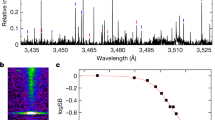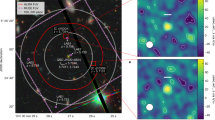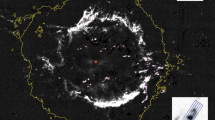Abstract
STRATTON1 was able to recognize two 'forbidden' N II-lines in the beautiful photographs of the corona spectrum obtained by Sekiguti1 at the total solar eclipse of June 19, 1936, and so to prove the occurrence of nitrogen in the solar corona. Moreover, Sekiguti noticed that two of the corona lines, λ 4815·9 and λ5738·0, on his photographs came very close to the nebular lines λ 4814·78 and λ 5737 in the spectrum of n-Carinæ. One of these two lines (λ 4814·78) is amongst those which Merrill2 recognized as'forbidden' Fe II-lines. Should this identification be the correct one, this would mean that in addition to nitrogen another element, namely, iron, exists in the solar corona. In view of the interest generally taken in the chemical composition of the solar corona, we wish to discuss in some detail the possibility of such an identification.
This is a preview of subscription content, access via your institution
Access options
Subscribe to this journal
Receive 51 print issues and online access
$199.00 per year
only $3.90 per issue
Buy this article
- Purchase on Springer Link
- Instant access to full article PDF
Prices may be subject to local taxes which are calculated during checkout
Similar content being viewed by others
References
NATURE, 140, 724 (1937).
Astrophys. J., 67, 391 (1928).
Bowen, I. S., Rev. Mod. Phys., 8, 35 (1936).
Author information
Authors and Affiliations
Rights and permissions
About this article
Cite this article
RUBINOWICZ, A. Does Iron occur in the Solar Corona?. Nature 141, 81 (1938). https://doi.org/10.1038/141081a0
Published:
Issue Date:
DOI: https://doi.org/10.1038/141081a0
Comments
By submitting a comment you agree to abide by our Terms and Community Guidelines. If you find something abusive or that does not comply with our terms or guidelines please flag it as inappropriate.



